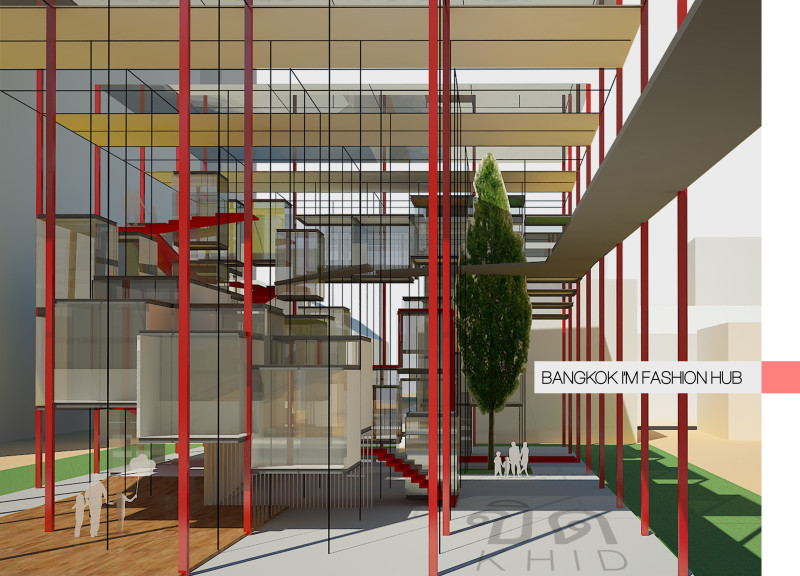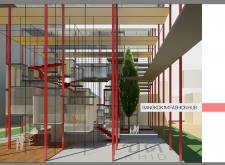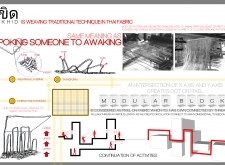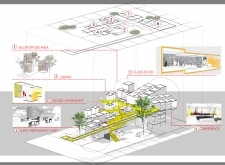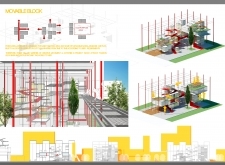5 key facts about this project
### Project Overview
Located in Bangkok, Thailand, the Bangkok Fashion Hub is designed as a creative center dedicated to the fashion industry. The project emphasizes a synthesis of cultural heritage and modern design techniques, aiming to foster collaboration and innovation among fashion designers and related disciplines.
### Spatial Configuration
The layout comprises modular blocks that define various functional areas while offering flexibility in usage. Spaces are thoughtfully arranged to encourage movement and interaction, supporting a range of activities:
- **Multipurpose Areas**: Versatile spaces adaptable for events, workshops, and exhibitions.
- **Library and Learning Spaces**: Designated environments for study and collaboration, enhancing educational opportunities.
- **Café/Restaurant/Bar**: A communal area that promotes informal interactions among attendees.
- **Studios and Workshops**: Dedicated creative environments that facilitate hands-on practice and engagement.
The design integrates open and enclosed areas, creating connections between indoor and outdoor spaces. This approach includes the deliberate use of greenery, which not only improves air quality but also introduces visual interest and a tranquil atmosphere.
### Materiality
The material palette is selected to enhance both functionality and aesthetics:
1. **Steel Structure**: Utilization of steel columns ensures structural integrity and allows for expansive, unobstructed spaces.
2. **Glass Facades**: Extensive glazing maximizes natural light and provides transparency, blending interior and exterior environments.
3. **Wooden Elements**: The inclusion of natural wood offers warmth, cultivating a welcoming ambiance.
4. **Colored Panels**: Vibrant structural panels reflect the dynamic nature of the fashion industry and pay homage to the rich colors of Thai textiles.
5. **Green Landscaping**: The strategic incorporation of plant life enhances the visual appeal while supporting sustainability initiatives.
### Unique Features
A distinctive aspect of the design is its modularity, allowing spaces to be reconfigured to meet diverse needs, from fashion shows to workshops and community events. The project also incorporates the traditional Thai weaving technique, Khid, as a conceptual framework, blending cultural heritage with contemporary architecture. This approach not only enriches the user experience but also establishes a strong identity that celebrates Thai fashion and cultural practices.


